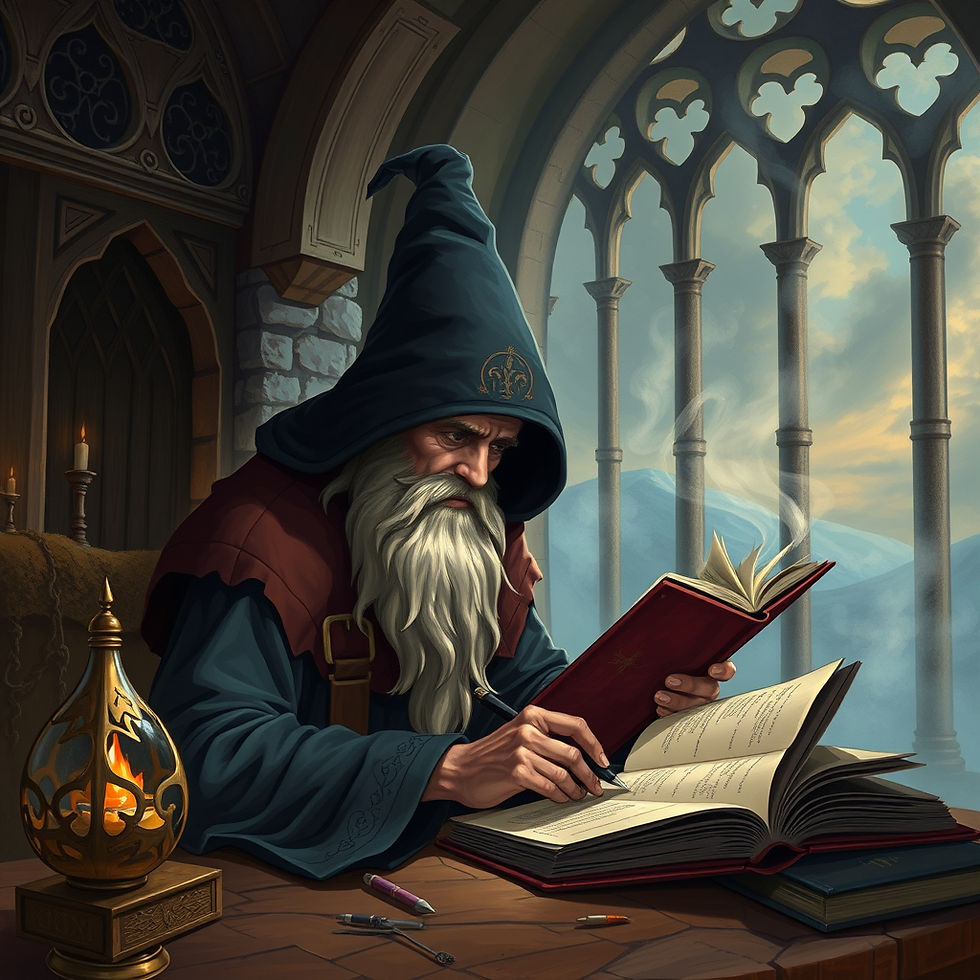Steven Erikson's Deadhouse Gates | Story and Psyche Review
- edgoodwyn
- Apr 29
- 4 min read
The Deadhouse Gates | Story and Psyche Review
So, the story continues from Gardens of the Moon, on another continent, however, though a few of the Bridgeburners from book 1 return. As it turns out, all the stuff going on in this book is going on at the same time the plot of book 3 (Memories of Ice) is happening. Anyway, Seven Cities is engulfed in a rebellion of “the whirlwind” of Ryraku desert, led by a mysterious goddess. Coltaine, a Wickan general, is tasked with escorting 50,000 refugees from the city of Hissar to the capital of Malazan, Aren. At the same time, Kalam sets out to get revenge against Empress Laseen, as other travelers from Genabackis arrive in Seven Cities on quests of their own.
Points to consider:
Plot and Pace: The pace is quick and dense, and once again Erikson does not hold your hand, he expects you to keep up. Hardly any characters from Gardens are in this one, and a slew of new ones are here. The plot is a little easier to follow than Gardens, but the lack of returning characters is an issue. The plot convergence is not complete because this book and book 3 are really tightly bound together, and some continue to develop beyond that.
Characters: once again, there are dozens of characters and viewpoints, and you have plotlines that are scattered across thousands of miles this time. They converge at the end (naturally), but it does take a while. Fans of Sando will like this, it’s like Sando on steroids. More chars, more places, much more plot, and constant high stakes and high tension. You rarely get a break.
The tone: is military fantasy even moreso this time. The chain of dogs plot, the highlight of this book, and one which you will NOT forget, was inspired heavily by several real-world events, such as the Trail of Tears, the Flight of the Nez Pearce, and other historical events where a force of people were displaced and had to run a horrible gauntlet. It’s extremely intense, and I would advise readers to be aware of that. It’s not for the faint of heart. E studied real-world costs of warfare.
Imagery on the Sando-Peake scale: continues to land right around the 4-5 range. Again, however, some may find it difficult to follow because E doesn’t spend a lot of time orienting you, and we’re covering thousands of miles again, so it can sometimes be a blur. Nevertheless, the relentless pace and action is so continuous, you may not mind. You might even consider the constant state of disorientation as a benefit.
Magic: as before, is super powerful, not explained in much detail, and you just go with it. There is relatively less of it here, at least in terms of mages, but much more going on in terms of weird monsters and extradimensional ‘warrens’, which get even a little more exposure here.
Story and Psyche:
All of these books have a very heavily allegorical bent to them. Deadhouse Gates is perhaps the most of the ones I’ve read so far. The Chain of Dogs, especially, is such a visceral EVENT that it qualifies more as an allegorical story depicting several of the realities of human existence such as warfare, cruelty, suffering, sacrifice, and duty, in a way in which it will be difficult for you to forget. The impact of a story is only partially from the book. The rest comes from you, the reader. In crafting such a harrowing journey, but in more abstract, fantasy terms, SE guides us through a brutal journey. The effects of it likely would be to increase ones resilience, perhaps heighten compassion, and perhaps shy one away from the dark realities of war. Whether that’s good or bad depends on the reader. It’s a symbolic statement–a nightmare that says “war creates situations LIKE the chain of dogs”. And you now have an incredibly vivid picture of how awful that is. I would not say it is ‘grimdark’, however, because it is not nihilistic. Rather, it has a tragic dimension to it, in the classic sense. That is, the theme and higher meaning becomes evident not in the characters outcomes, but rather in their actions DESPITE those outcomes, and in the actions the more evil or confused characters DONT do.
My take
I give it 4 dreamstones out of 5. I loved it, but not as much as Gardens of the Moon. I found the characters seemed a little more distant and in some cases unapproachable, and the dense, complicated plotlines were difficult to keep track of sometimes and felt disconnected from one another. Nevertheless, the Chain of Dogs element was so moving, so powerful, and so frankly grueling, I had to give it a boost.
So that’s what I’ve got. I will review the rest of the Malazan books as I go–I just finished book 6 and I’m reading Reaper’s Gale now. In any case, be sure to check out my own NA fantasy novel, King of the Forgotten Darkness, available now, link below. Until next time.
Keep Dreaming!
EG





Comments